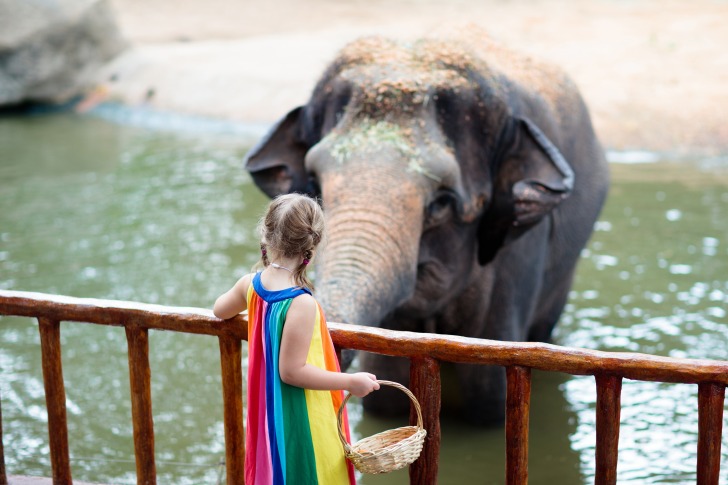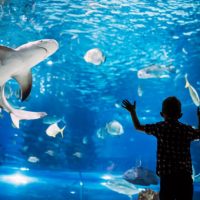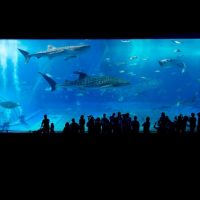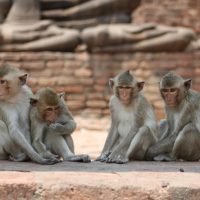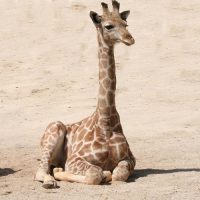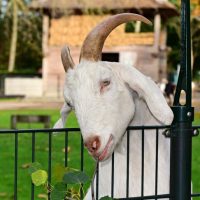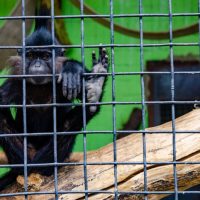Utah has a dry climate similar to states like New Mexico or Arizona.
It also has a fair amount of land area.
For that reason, it surprised me that I didn’t see as many available zoos as I had.
Now for aquariums, it goes without saying that they have to be made by humans.
There’s not enough water in some of the desert areas to host them naturally.
Anyway, I recommend this list of zoos, parks and aquariums in Utah.
10 Best Zoos and Aquariums
I included a few parks where you can see animals and botanical gardens, along with zoos and aquariums.
It gives you more options depending on where you plan to go in Utah.
1. Hogle Zoo
The Hogle Zoo first opened in 1931 and is home to more than 800 animals spanning over 42 acres.
Unique features include the Rocky Shores exhibit and the Animal Encounters.
The Rocky Shores Exhibit at the Hogle Zoo in Utah features polar bears, sea lions, otters, seals and more.
Guests can view these amazing creatures as they swim through the clear waters.
The Elephant Encounter at Hogle Zoo in Utah is a unique experience for visitors to get up close and personal with these gentle giants.
You might also see them submerge themselves underwater to cool off and transport themselves.
I like elephants personally.
I rode one at least once as a child.
It’s probably now one of the only animals I could ride on that would support my weight.
I’d try if that was allowed at the Hogle Zoo.
2. Tracy Aviary & Botanical Gardens
The Tracy aviary first opened in 1938 in Salt Lake City.
It’s a part of Liberty Park. and is home to more than 30 species of South American birds.
Some birds you can observe here include Macaws, King Vultures and Owls.
In fact, you can see these creatures in habitats just right for them.
For instance, owls like the forest, so that’s where you know you can find them.
The aviary also features one of the rarest birds in the area, the swan.
There’s also the dabbling duck pond exhibit, where you can view and interact with migratory birds.
I think my favorite time, however, would be immersing myself amongst the Kennecott Wetlands exhibit.
It demonstrates birds that came from Native Utah wetlands.
Some of my least favorite birds are probably hawks and turkey vultures.
They’re here too, and I am trying to hold back from telling you that its unfortunate.
However, they deserve a chance at a safe life too.
3. Ogden Nature Center
Just like the Tracy Avery, the Ogden Nature Center features birds.
Some species on this 152-acre natural site include swans, ducks, finches and geese.
Other birds found at this center are osprey hawks, barn and long-eared owls and mourning doves.
The Nature Center has a checklist of birds, and their website reveals the different times of the year you can expect to see them.
When I viewed the bird checklist, I estimated that there are about 100 species of different types.
The Ogden Nature Center first opened sometime after its founding date in 1975.
Children who come on field trips seem to love it.
4. Red Butte Garden and Arboretum
The Red Butte Garden has more than 100 acres of natural space.
They also unveiled the Water Conservation Garden in 2017.
This arboretum and botanical area also has about 29,000 plants living on it.
I find fascinating how well some of the moving creatures and plants here adapted to desert life.
The Conservation Garden has become an inspirational example of what you can grow without much watering, according to Visit Salt Lake.
Now, I shall finally get to the animals.
Some creatures living at Red Butte Garden include coyotes, bobcats, squirrels, rabbits, deer and snakes.
This large natural area sits in the Wasatch Mountain foothills.
When you visit here, remember that it’s not a zoo with keepers guarding your every move.
Don’t get too close to the animals because you don’t know how they will react.
Take precautions you normally would, say if you were to visit a state or national park.
5. Living Planet Aquarium
I don’t think of aquatic animals like the ones I’d see in Utah.
However, there’s an aquarium dedicated to them nonetheless.
Upon reading more about the Living Planet Aquarium, I did find some water animals native to Utah.
You can learn more about them on the “Discover Utah” page of The Living Planet’s website.
Some you would see at this aquarium include a desert tortoise, river otter, Bonneville Cutthroat Trout and more.
The Cutthroat Trout is Utah’s state bird and comes from Lake Bonneville.
Another aquarium exhibit is the Deep Sea Lab.
It houses the Pacific Hagfish, the Japanese Spider Crab and the Giant Isopod.
Other sections of the aquarium host sea cucumbers, sponges, penguins, nurse or epaulette sharks.
There’s also the loggerhead sea turtle, gray reef shark or the clownfish and ray.
There’s many more to mention found here.
By the way, the Living Planet Aquarium located in Draper first operated after its founding date in 2014.
By 2023, it would become home to more than 650 species of water animals.
The total animal count is more than 4,000.
6. Stokes Nature Center
Since its opening in 1997, the Stokes Nature Center has become a popular destination for locals and visitors alike.
I don’t know how many animals it has, but it does feature beavers, squirrels and chipmunks.
I think watching beavers and chipmunks would be especially entertaining.
I don’t know if I have ever spent as much time as I’d like to do that.
It’d be interesting to see them in action when chipping wood with their teeth.
Note, however, that chipmunks and squirrels can also chew through wood.
All these animals use this skill for burrowing their way through blockages.
Otherwise, they’re building forts or damns to live in or protect themselves.
Anyway, Stokes sits on a 3000-square-foot lot that sits on U.S. Forest land.
The American Legion first constructed it in 1924.
Besides the animals with the teeth meant for chipping wood, websites mention it being a place to fish.
Birds also frequent this area.
Visitors have mentioned seeing them along with the fish on hikes near Logan Canyon.
I wish I knew more about Stokes, and I did try to find more information.
Most of what I discovered came from previous visitors.
I concluded that it’s an important center for quality animal care, environmental education and outdoor recreation.
I would consider visiting Stokes if I had a reason to come to this Utah location for at least one day.
It sounds like Stokes could be an unforgettable experience.
7. USU Botanical Center
To me, there’s only one thing better than visiting zoos, aquariums or nature centers that have animals.
I like being on the site of a place that also has plenty of green space for appreciating and relaxing.
The USU Botanical Center is a part of Utah State University.
I recommend it to view pond life on campus.
For instance, you might spot a slider turtle, damselfly, water boatmen, white pelicans or red-winged blackbird.
This area is also known to have Rainbow Trout.
Besides the bright blue of the damselfly, I also just noticed a picture of a black and white dragonfly.
Both to me look like fascinating tiny critters.
It’s more challenging to see critters in their natural habitat stay still for long enough for you to observe them.
However, it’s less constraining for them than the way some zoos used to hold animals in smaller metal cages.
8. SeaQuest Utah
SeaQuest has several locations. One of them is in Utah.
They have about 1,200 species of animals.
Some of them include sea turtles, schools of fish, birds, lizards, sharks, and snakes.
Exhibits include deserts, rainforests and underwater areas.
SeaQuest does more than display its animals for the public to see, by the way.
They also provide health care and serve meals based on their ideal diet.
You might also have the chance to feed them too if you show up at the right times.
This aquarium sometimes gives out feeding tokens to monitor how much “snacks” visitors give them throughout the day.
9. Wild Kingdom Train
Wild Kingdom Train used to operate as Animaland Train when it opened in 1967.
This steam locomotive takes guests for a tour around the lagoon.
As you make your way around the body of water, you’ll see zebras, camels or tigers.
Other animals you might see include lions, maybe a golden eagle, and more.
You don’t have to rush to leave Lagoon Park, the RV and camping ground that sponsors the Wild Kingdom ride
Stay for a night or two, or even longer, if you want.
10. Zootah
I think “Zootah” is a clever name for a zoo.
It has more than 40 species of animals living on its land.
Some of them came right from the state, and others came here from other locations.
Zootah features the Macaw, Monkeys, a Fox, Lynx, and Tortoise.
Other animals include wolves and foxes, bald eagles, and owls.
Raccoons and antlered creatures also live here.
Zootah plans quite a few educational programs, including field trips for children.
Internship opportunities are also possible.
This animal center also reaches out to school assemblies and other outside locations.
10 Best Zoos and Aquariums in Utah – Summary Table
| Zoos and Aquariums | Address |
|---|---|
| Hogle Zoo | 2600 Sunnyside Ave S, Salt Lake City, UT 84108, USA |
| Tracy Aviary & Botanical Gardens | 589 E 1300 S, Salt Lake City, UT 84105, USA |
| Ogden Nature Center | 966 W 12th St, Ogden, UT 84404, USA |
| Red Butte Garden and Arboretum | 300 Wakara Way, Salt Lake City, UT 84108, USA |
| Living Planet Aquarium | 12033 Lone Peak Pkwy, Draper, UT 84020, USA |
| Stokes Nature Center | 2696 East US Highway 89, Logan, UT 84321, USA |
| USU Botanical Center | 920 S 50 W, Kaysville, UT 84037, USA |
| SeaQuest Utah | 1201 N Hill Field Rd #1072, Layton, UT 84041, USA |
| Wild Kingdom Train | 375 Lagoon Dr, Farmington, UT 84025, USA |
| Zootah | 419 W 700 S, Logan, UT 84323, United States |
Utah Safety Overview
READ THE FULL REPORT: Utah Safety Review
Safety Index: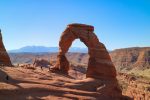
- OVERALL RISK: LOW
- TRANSPORT & TAXIS RISK: LOW
- PICKPOCKETS RISK: LOW
- NATURAL DISASTERS RISK: MEDIUM
- MUGGING RISK: LOW
- TERRORISM RISK: LOW
- SCAMS RISK: MEDIUM
- WOMEN TRAVELERS RISK: LOW
Frequently Asked Questions
How many zoos are located in Utah?
It depends on what you call a “zoo.”
There are at least a few if you don’t count state parks, conservation centers, or other natural areas.
What types of animals can be found in Utah's zoos?
It depends on the concentration of the zoo.
Some of the animal centers and natural sites focus more on birds.
Others will have more variety.
Some land animals you might see include lions, zebras, red pandas, polar bears, and snow leopards.
Water animals include amphibians, reptiles, and fish, such as frogs, alligators, snakes, clownfish, and sharks.
Are there any special activities offered at the zoos in Utah?
Each zoo has its own unique itinerary.
For instance, some of them might host animal encounters.
This allows you to get closer than the rest of the public to animals.
Other zoos perhaps host night safari tours that allow guests to observe nocturnal animals.
You might travel through aquarium tunnels or talk walks with reptiles on leashes – so many possibilities.
Are there any conservation efforts taking place at the zoos in Utah?
Yes, many of the zoos in Utah are actively involved in conservation efforts.
The primary way this happens is through education using media presentations.
However, the best conservation education comes from hands-on training in animal environments.
Experiential learning can change the world – or at least Utah.
